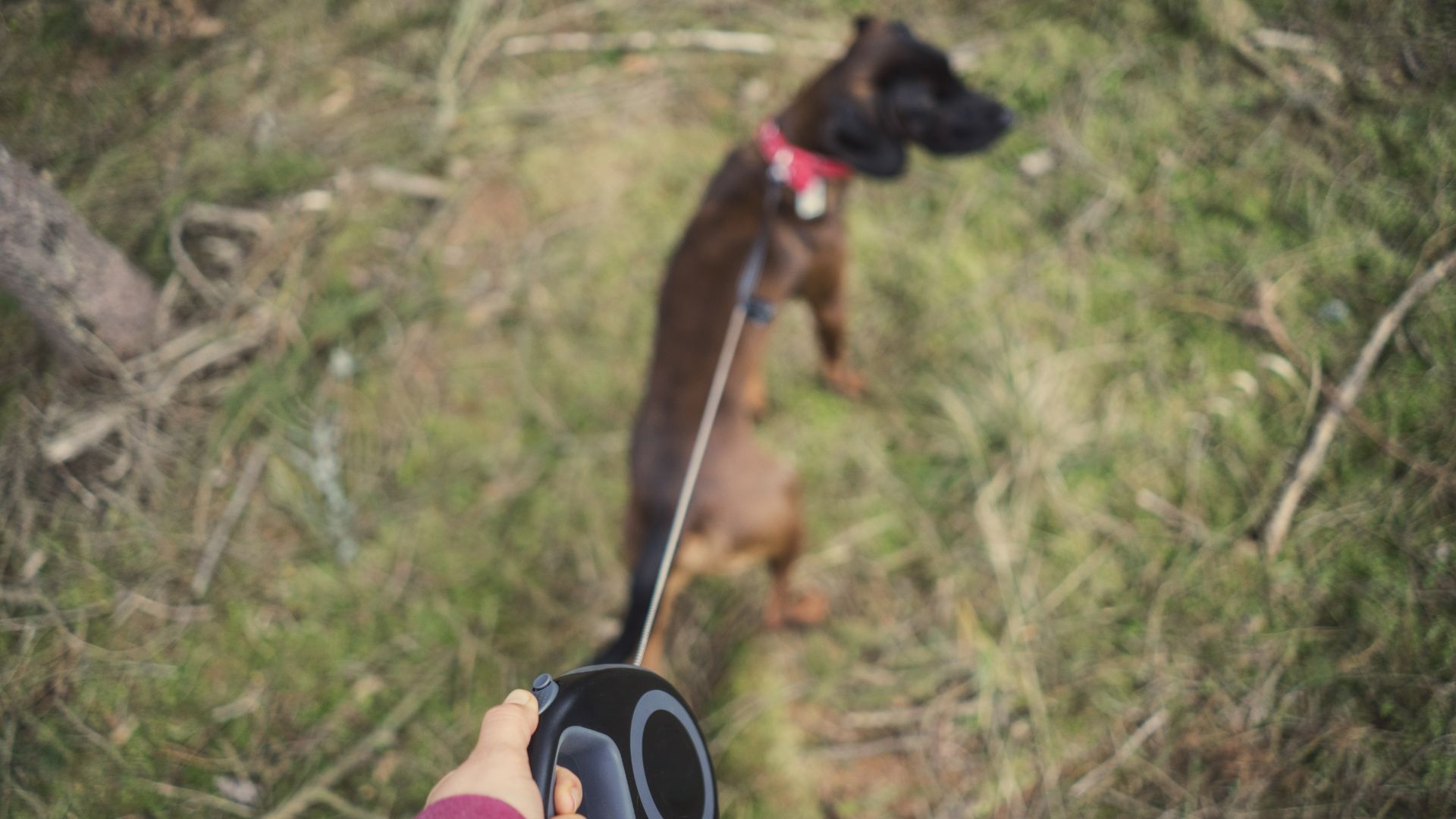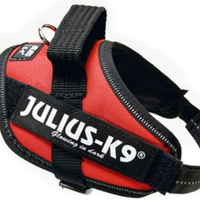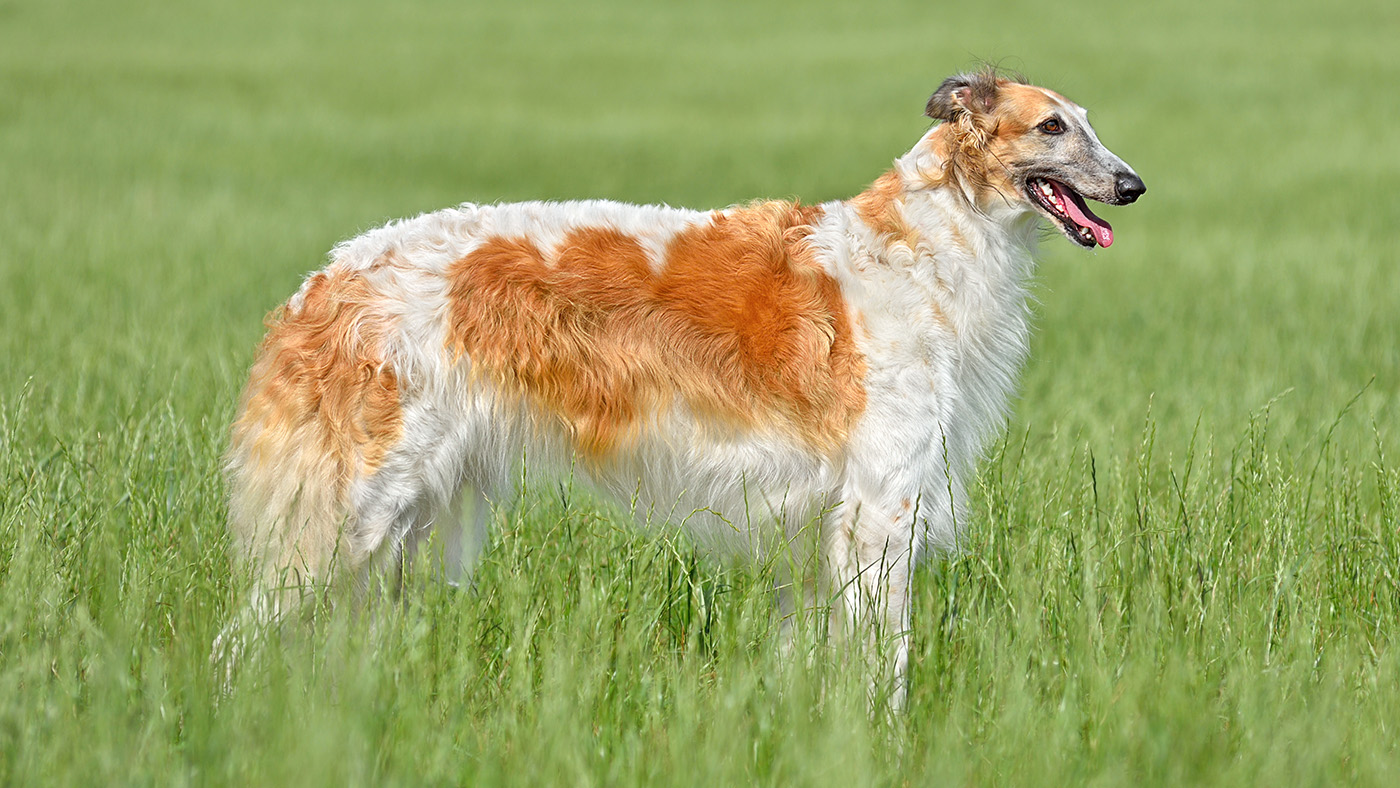Types of dog leashes: which is right for your dog?
Learn the pros and cons of all types of dog leashes to see which is the right fit for your dog

It's easy to feel overwhelmed by all the types of dog leashes on the market. We get it. But don't worry we've covered the most popular types of dog leashes here to help you figure out which one is best for your dog.
Taking your dog on a walk is likely something you'll be doing at least once a day, so you want to be sure that you choose one of the best dog leashes for your dog. There are a few things to consider when it comes to choosing a dog leash. You'll want to consider things like the size and personality of your dog, and where you are on your leash training journey.
In this feature, we go over all the pros and cons of the different types of dog leashes and even have vet Dr. Rebecca MacMillan weigh in on each type. Let's check them out!
What are the different types of dog leashes?
1. Standard fixed-length leash

The most common type of leash is the standard leash that has one clip that attaches to your pet's collar or harness. This is the most popular types of leash and is a good fit for most dogs. When choosing this type of leash you'll want to look out for ones that are made of durable long lasting materials, like nylon or leather. These leashes are great for dogs that pull.
Dr. MacMillan says, "Fabric leashes can be a bit lighter, which may be easier for puppies, but they can fray and break if your dog likes chewing on them."
Chain leashes also fall in this category, while they may be too heavy for puppies and toy-dog breeds, that will be good for large-dog breeds.
Lifetime Leash by Atlas Pet Company
This dog leash is at the top our list for best leashes. It is made with climbing rope, so you know it is durable and will stand up against even the biggest dog chewers.
2. Slip leash

This leash features a loop that can be put over your dog's head and then tightened to the perfect fit. The leashes also tend to tighten as your dog pulls against you, making them not ideal for dogs who pull excessively. Dr. MacMillan advises against using this type of leash for dogs that have spinal or neck problems.
This leash takes away the need for a harness or collar as it fits directly around your dog's neck. This leash also features reflective straps to keep your dog visible in the dark.
3. Retractable leash

This leash is a great option for owners that are looking to give their pooches a little more freedom while out on walks. As they are given more space to roam and sniff around. These leashes however, are not great for dogs that pull. As they will be rewarded with more free range the more they pull on their leash.
Flexi Classic Cord Retractable Dog Leash
This retractable dog leash comes in a range of colors and sizes. The smallest size starts at a length of 16ft while the large goes all the way to 8m.
4. Dog harness

Along with leashes, there are also several different types of dog harnesses. Harnesses can take some of the pressure off a dog's neck and distribute it over the dog's body, making your hound more comfortable on walks. Many dog owners also use harnesses for dogs that pull.
This was our top pick in our guide to the best dog harnesses. It is super durable, and we love that it has reflectors so that your dog can still be seen in the dark. It also comes in smaller sizes to fit any breed of dog.
What is the best type of leash for training

When it comes to how to stop a dog from pulling, the right leash can sometimes make all the difference. You may want to consider a double-ended leash. These leashes have two clips. One that attaches to the back of your dog's harness and another that goes on the chest of the harness. This allows you to be able to steer your dog and it stops them from being able to lean all their weight against you.
If you are working on training recall in dogs, Dr. MacMillan says, "A long-line training leash used in a large outdoor space can be a great option for dogs that are still working on their recall."
This training lead is available in a range of sizes from 15ft to 100ft – as well as a wide range of colors. It’s a great option for giving your dog freedom safely and teaching recall.
If you found this helpful, check out How to use a harness on a dog and Ways to build self-care into your dog walk.

Rebecca is a veterinary surgeon who graduated in 2009 from the Royal Veterinary College in London. She has a wealth of experience in first opinion small animal practice, having done a mixture of day-to-day routine work, on-call emergency duties and managerial roles over the years. She enjoys medicine in particular and she is proud to have recently achieved a BSAVA postgraduate certificate in small animal medicine (with commendation). She writes on various feline and canine topics, including behavior, nutrition, and health. Outside of work and writing she enjoys walking her own dog, spending time with her young family and baking!
PetsRadar Newsletter
Get the best advice, tips and top tech for your beloved Pets

Alexis is a Digital and Syndication writer for PetsRadar and she produces everything from our listicles to buying guides, features, and deals. Growing up with cats, dogs, and fish, Alexis brings her own personal experience and knowledge to the content she writes.
Originally from the United States, Alexis graduated from Bowling Green University with a Bachelor of Arts degree with a concentration in English Language and Literature. She began her editorial career working as in Editorial Intern at Ohio Magazine and fell in love with lifestyle journalism.
Alexis has also worked for titles across the UK including Daily Mail, Space.com, and Black Women Rising Magazine.
Alexis works hand-in-hand with qualified vets to bring accurate and helpful information to pet parents and is passionate about creating content that will not only support pet parents but also offer them an enjoyable read.





